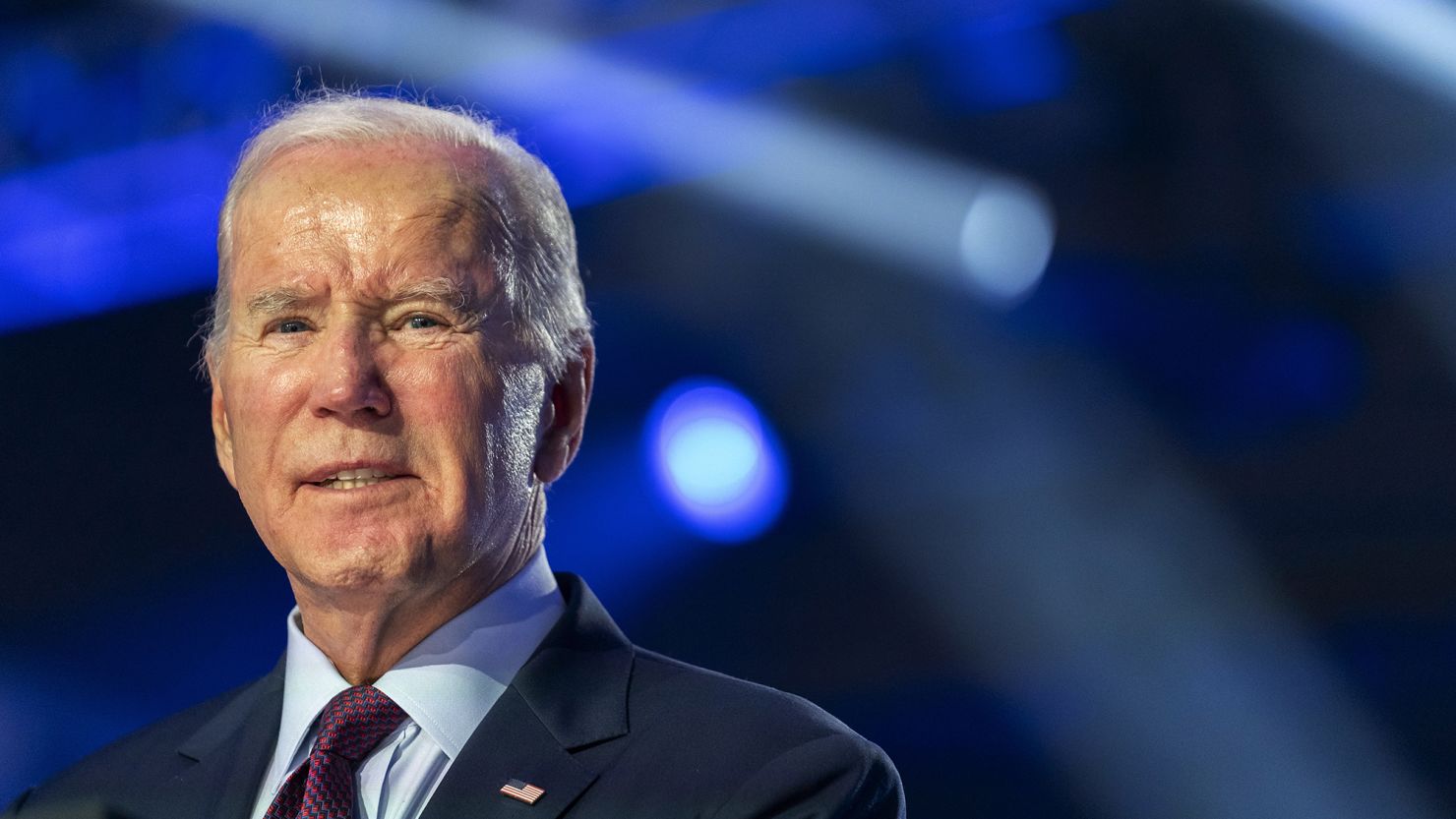
The political eyes of the world are on Nevada this week for the state’s Democratic and Republican nominating contests.
Former South Carolina Gov. Nikki Haley suffered an embarrassing defeat in the state’s nonbinding GOP primary Tuesday. But in the contests that award delegates, President Joe Biden easily won the Democratic primary while former President Donald Trump is expected to coast Thursday in the GOP caucuses.
That lack of competitiveness belies the fact that Nevada has seen some of the closest general election outcomes in the past two presidential contests. Perhaps that’s why Democrats should be concerned that Trump has led Biden in recent polling from the Silver State.
And Nevada is emblematic of a nationwide trend. Biden finds himself in a place no likely Democratic presidential nominee has been since 2004: clearly trailing for months on end.
Much was made this past weekend of an NBC News poll that put Trump at 47% to Biden’s 42% in a hypothetical general election. What stood out to me is that it was merely one of three polls (including CNN/SSRS and Reuters/Ipsos) released in the past week that gave Trump a 4- or 5-point advantage among registered voters.
Even when those findings are averaged with a Quinnipiac University poll from last week that had Biden ahead by 6 points, Trump is up by about 2 points. This is a lead that has been fairly steady over the past six months. The occasional poll, like Quinnipiac’s, will find Biden up, but the lion’s share of the data points to Trump in the lead.
This is a far different situation for Democrats compared with the past few cycles. Biden was never behind Trump during the 2020 campaign, and not just in the polling average. He didn’t trail Trump in a single national poll that met CNN standards for publication.
Going back further, Trump led only once, for a short period, in the 2016 average. That was after the 2016 Republican convention. Likewise, in the 2012 cycle, Republican Mitt Romney may have been ahead very shortly after the first GOP debate, but, in reality, President Barack Obama led wire to wire. Obama was also up for pretty much the entire general election campaign over Republican John McCain in 2008, except for briefly after the GOP convention.
President George W. Bush in 2004 was the last Republican to be consistently ahead of his Democratic opponent. That race against Democrat John Kerry would shift a bit during the summer of 2004 before Bush solidified his advantage after the Republican convention.
This year, however, is far different from 2004 insofar as Bush was the incumbent then like Biden is now.
Incumbents are usually never behind in early polling. Trump was in 2020. Before him? Almost no one since the advent of modern polling. Incumbents who briefly trailed at some early point in the campaign (such as Ronald Reagan during the 1984 election) had regained their leads by this time. Incumbents who would trail for much of the campaign (such as Gerald Ford in 1976) were still ahead at this point in the cycle.
Even Harry Truman and Thomas Dewey were trading leads in the early part of the 1948 cycle before Dewey settled into a polling lead for good and then lost in an upset.
The root of Biden’s problem is that he’s unpopular with the general electorate. His approval rating has been hovering within a few points of 40% for more than two years now, and it’s not getting any better for him. Biden has the worst approval rating at this point for any elected president through their first term.
This should worry Democrats because we’re getting to the point where current approval ratings have some correlation with approval ratings by election time. Every day that Biden’s approval rating is bad increases the chance that his approval rating will be bad when people start voting this fall.
What often changes the most between now and the general election is the popularity of lesser-known candidates (i.e., usually challengers).
Trump is an exception to this rule. He has near-universal name identification like Biden. Voters know Trump; they don’t like Trump; and yet, they seem to prefer him to Biden.
This would seemingly make it more difficult for Biden to influence the race to his benefit through attack ads.
Biden’s issues also aren’t just candidate-specific. Recent Gallup polling showed a record low level of adults self-identifying as Democrats in 2023. Just 27% of adults identified as Democrats (or 43% when you include independent leaners), which is the lowest figure for Democrats since at least 1988 (or 1991 when you include independents leaners).
The good news for Biden is that he’s not far behind. The average 2-point edge that Trump sports wouldn’t be considered safe if it holds through Election Day. We’re still nearly nine months away from the fall election. Trump is still facing four criminal indictments, which is something we don’t have any historical precedent for.
The bad news for Biden is that the precedent we do have is not promising: Incumbents hoping to win reelection aren’t usually trailing at this point in a presidential campaign, and Biden continues to be fundamentally unpopular.
CNN










